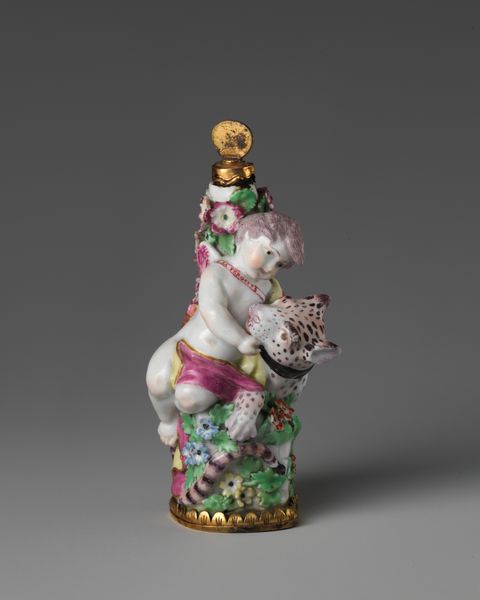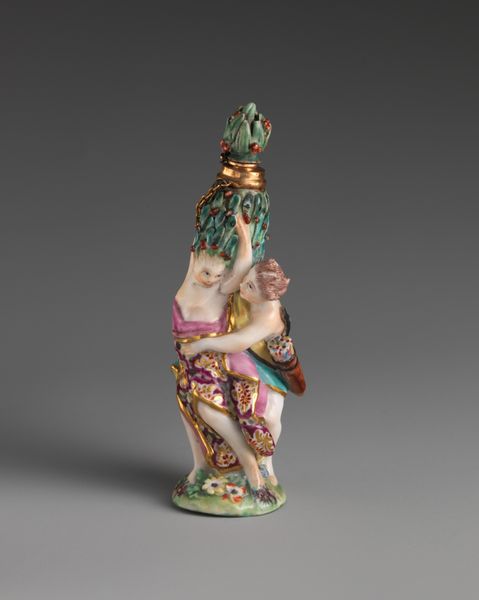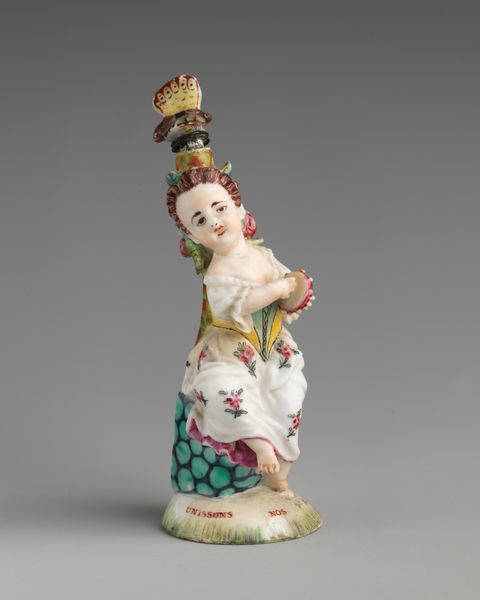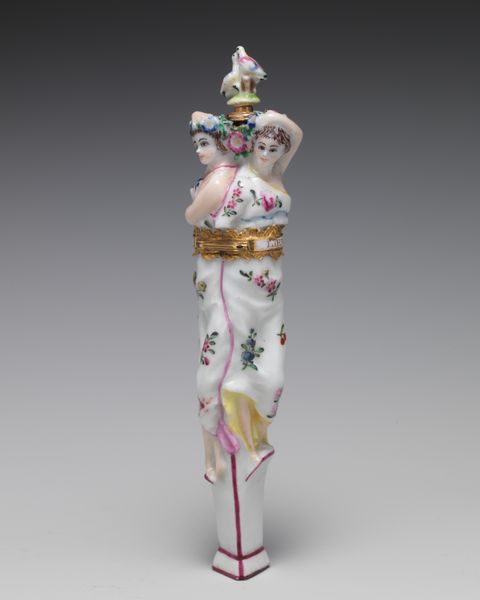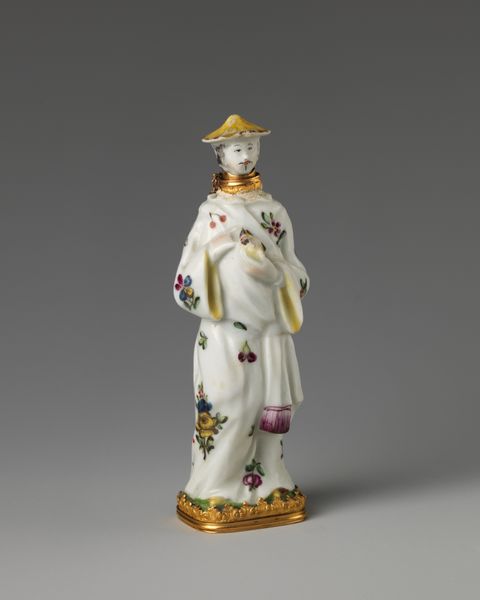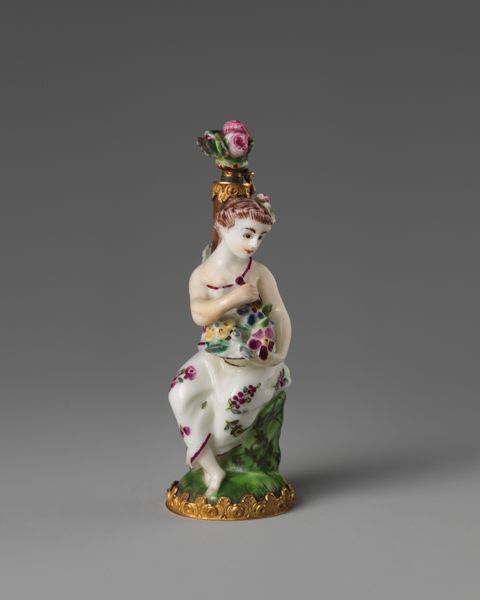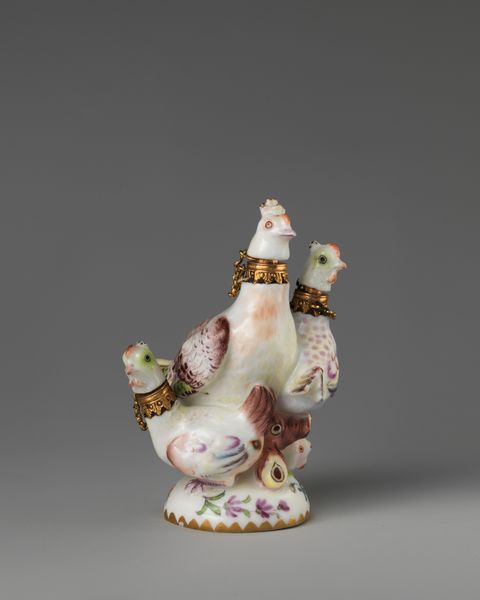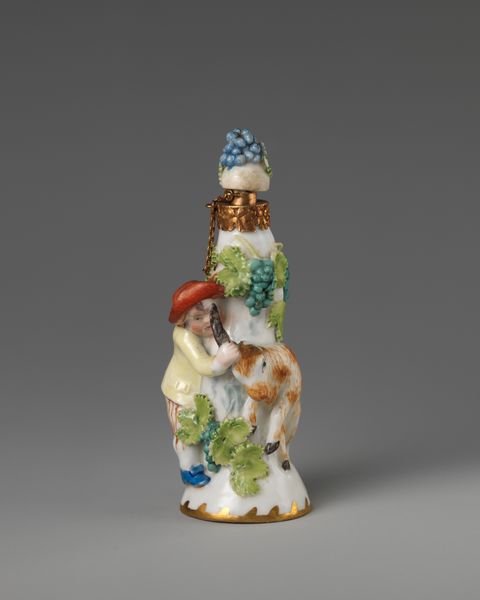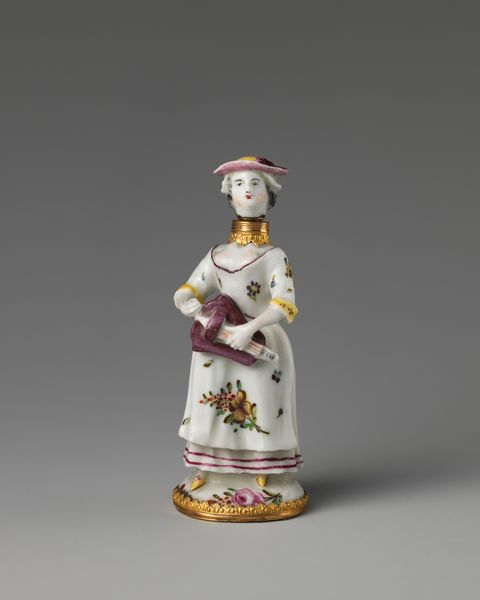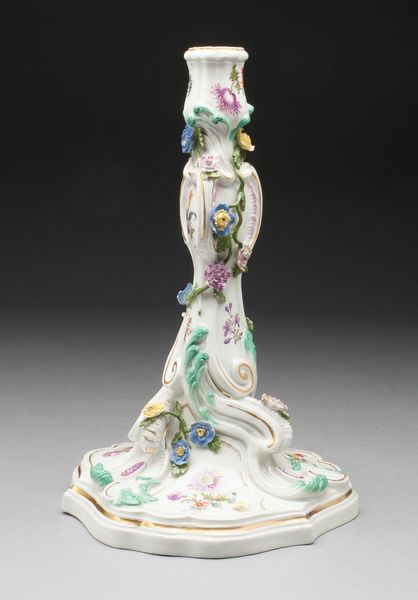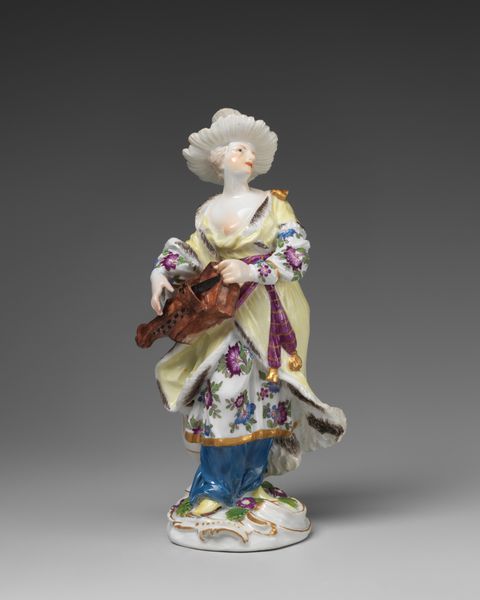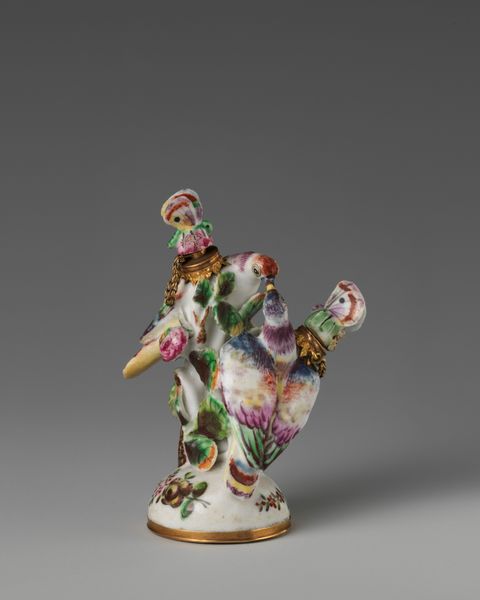
ceramic, porcelain, sculpture
#
ceramic
#
porcelain
#
figuration
#
sculpture
#
decorative-art
#
rococo
Dimensions: Height (with stopper): 4 1/16 in. (10.3 cm)
Copyright: Public Domain
Curator: This captivating porcelain sculpture, titled "The Three Graces," was crafted by the Saint James's Factory sometime between 1745 and 1760. It now resides here at the Metropolitan Museum of Art. Editor: Oh, wow. It's like a porcelain perfume bottle from a fairytale. It's beautiful and unsettling at the same time. Are the faces identical? Curator: The faces do present a certain sameness, echoing idealised beauty standards of the period. Consider the artistic conventions influencing representations of women during the mid-18th century. This was a time when aristocratic patronage shaped art production and consumption, including ideas about beauty and femininity. The sculptures themselves act as symbols reflecting power dynamics related to display and collecting, indicating the owner's wealth, status and taste. Editor: Sure, I get the socio-historical context... but those eyes, all staring blankly... it’s hard to describe! It reminds me of an old film reel, those haunting faces of women looking through the lens into some unknown future. Are those floral details painted by hand? Curator: Indeed, the painted floral decoration and the gilding exemplify the Rococo style. As you might expect, the ceramic’s creation demanded significant skill; each stage would require the labor of specialised workers. Moreover, the delicate construction of such a figurine shows a society enamored by displays of artistry and luxury. It speaks to colonial influences in fashionable circles, a reflection of a broader cultural landscape influenced by international trade and the exchange of exotic materials. Editor: Right, I can feel all that complexity now... Looking closer, they appear almost strangled in those robes! This is much darker than I initially thought. I wonder what the Saint James's Factory wanted to express with this piece. Curator: We may not fully recover the artist's singular intention, of course. Yet what remains undeniably resonant is this sculpture's continuing ability to stir, provoke, and engage us with histories that continue to shape perceptions of gender, class, and artistic expression. Editor: I will never look at porcelain in the same way, will I? Thank you for bringing those layers of meaning to life for me!
Comments
No comments
Be the first to comment and join the conversation on the ultimate creative platform.
